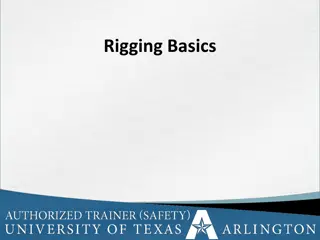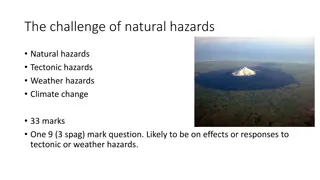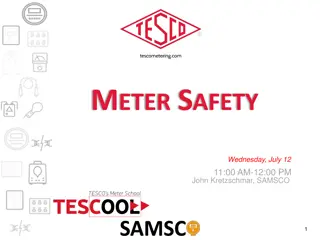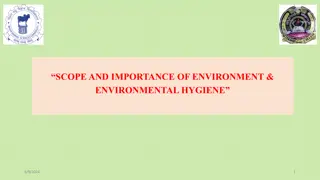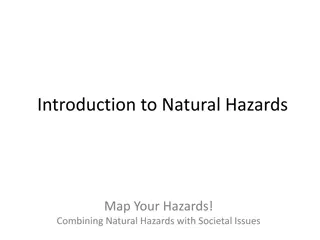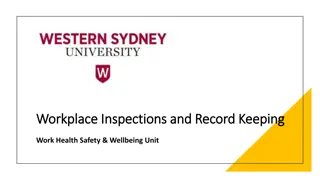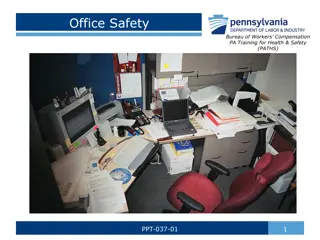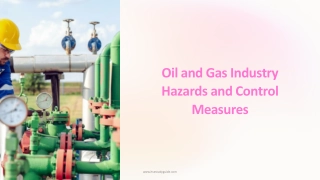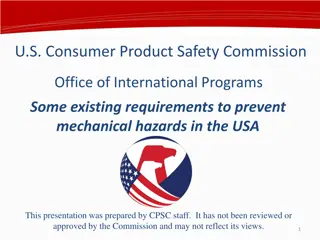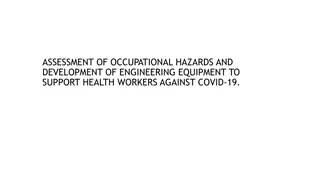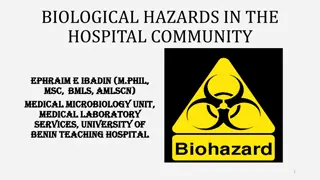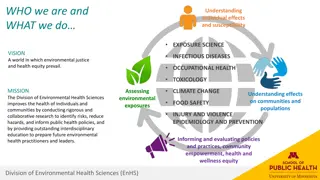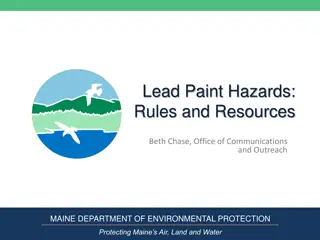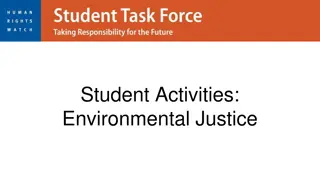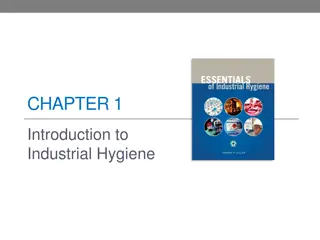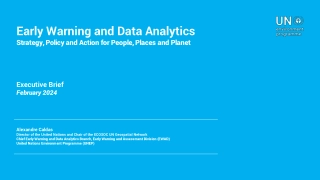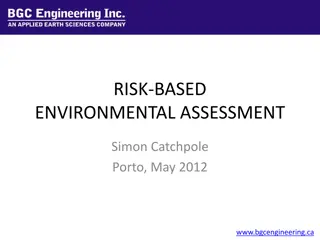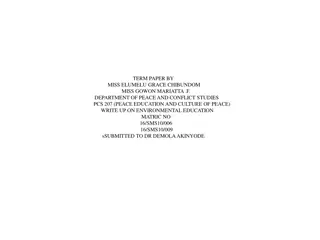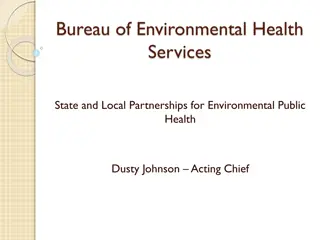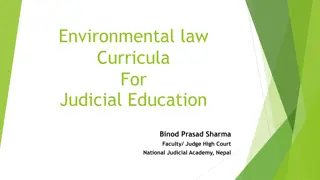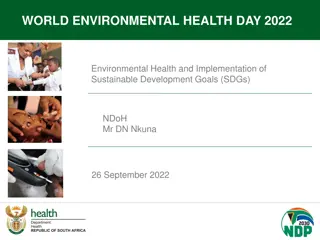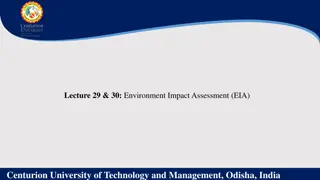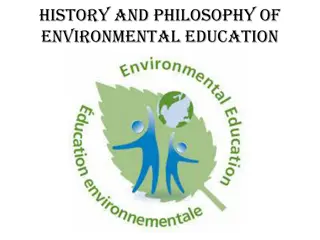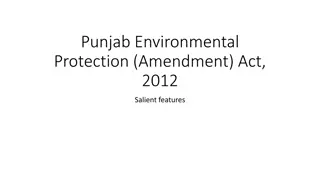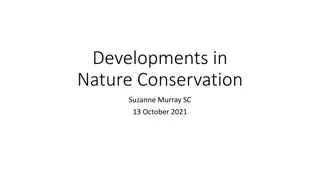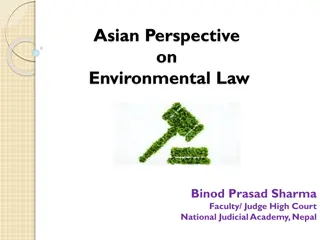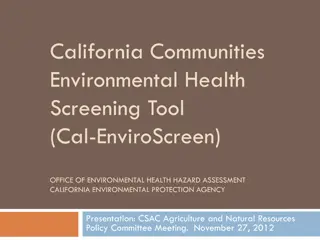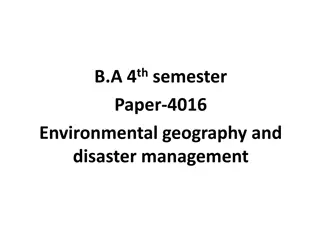Understanding Environmental Hazards and Management
Exploring major hazards management, geology perspectives, ecological concepts, natural environmental hazards, classes of natural hazards, and introduction to environmental hazards management. The content covers ecological levels, abiotic factors, biomes, environmental degradation, and more.
Download Presentation

Please find below an Image/Link to download the presentation.
The content on the website is provided AS IS for your information and personal use only. It may not be sold, licensed, or shared on other websites without obtaining consent from the author. Download presentation by click this link. If you encounter any issues during the download, it is possible that the publisher has removed the file from their server.
E N D
Presentation Transcript
MAJOR HAZARDS MANAGEMENT
Geology and its perspectives A mantle is a layer inside a planetary body bounded below by a core and above by a crust. Mantles are made of rock or ices, and are generally the largest and most massive layer of the planetary body
Ecology http://bioexpedition.com/wp-content/uploads/2012/04/Biomes_General_6001.jpg http://www.worldbiomes.com/pics/AquaticBiome.jpg
Lesson Objectives Describe ecological levels of organization in the biosphere. Distinguish between abiotic and biotic factors. Define organism, population, community, ecosystem, biome, and biosphere as the term are used in ecology and other ecological concepts. Identify factors that determine population growth rate. Compare and contrast exponential and logistic growth. Define limiting factors and their effect on population dynamics. Compare and contrast niches and habitats. Identify and describe terrestrial biomes. Give an overview of aquatic biomes. Describe characteristics of biotic and abiotic components of aquatic and terrestrial ecosystems
Natural Environmental Hazards An environmental hazard is a substance, a state or an event which has the potential to threaten the surrounding natural environment / or adversely affect people's health, including pollution and natural disasters such as storms and earthquakes
CLASSES OF NATURAL HAZARD Atmospheric This type of natural disaster has its own natural characteristics, geographic area where it occurs (areal extent), time of year it is most likely to occur, severity, and associated risk. In most cases, a natural disaster or event involves multiple hazards: severe thunder-storms spawn tornados; wind is a factor in thunderstorms, severe winter storms, tropical cyclones, and hailstorms; snowfall from a severe winter storm can prompt avalanches.
Introduction to Environmental Hazards Management
Environmental degradation and pollution Soil pollution is defined as the presence of toxic chemicals (pollutants or contaminants) in soil, in high enough concentrations to pose a risk to human health and/or the ecosystem. In the case of contaminants which occur naturally in soil, even when their levels are not high enough to pose a risk, soil pollution is still said to occur if the levels of the contaminants in soil exceed the levels that should naturally be present.



